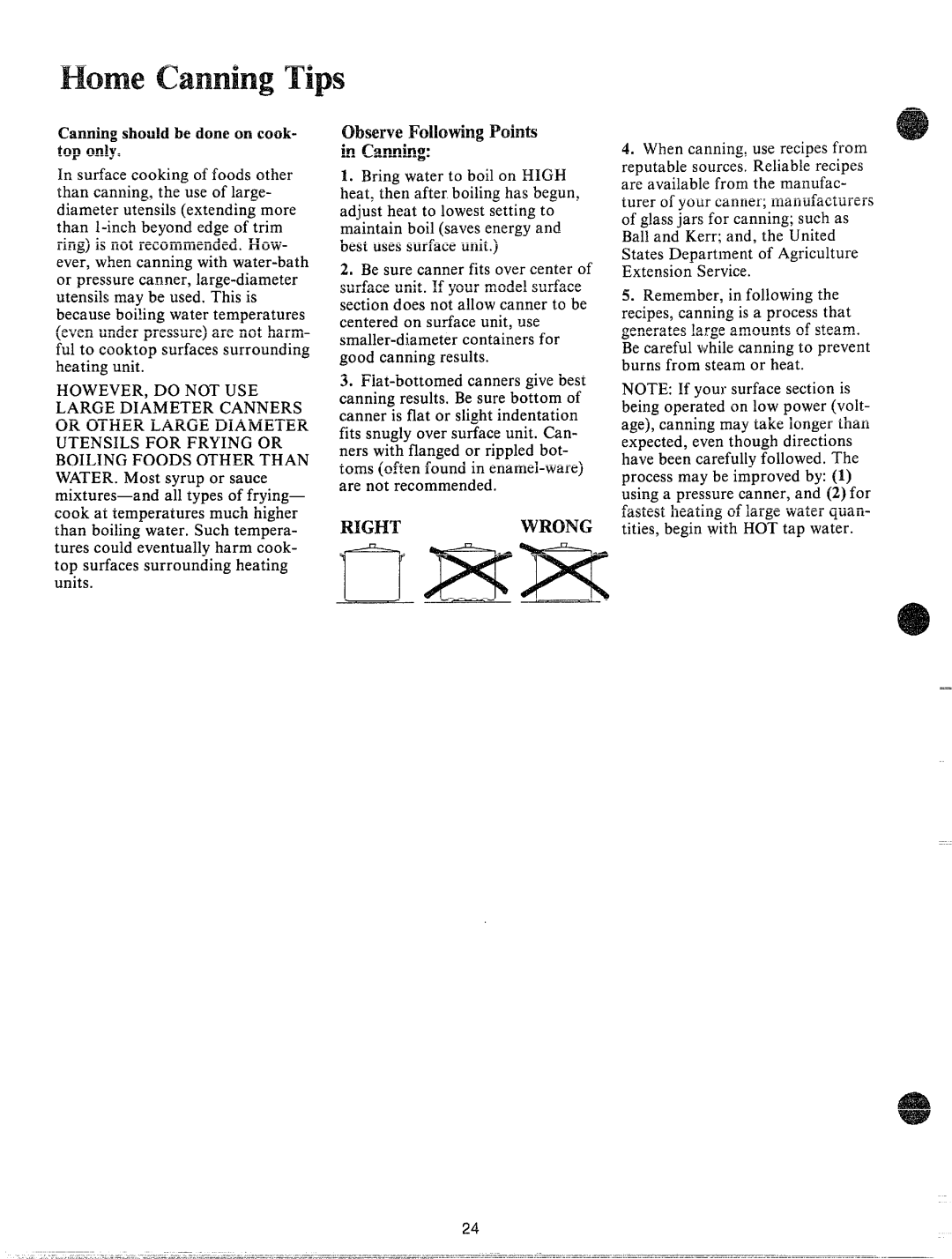
Canning should be done on tmcdi- toponly.
In surface cooking of foods other than canning, the use of large- diameter utensils (extending more than
HOWEVER, DO NOT USE LARGE DIAMETER CANNERS OR OTHER LARGE DIAMETER UTENSILS FOR FRYING OR BOILING FOODS OTHER THAN WATER. Most syrup or sauce
observeFmn’fvingPoints
incanning:
1.Bring water to boil on HIGH heat, then after boiling has begun, adjust heat to lowest setting to maintain boil (saves energy and best uses surface unit.)
2.Be sure canner fits over center of surface unit. If your model surface section does not allow canner to be centered on surface unit, use
3.
RIGHTWRONG
4.When canning, use recipes from reputable sources. Reliable recipes are available from the manufac- turer of your canner; manufacturers of glass jars for canning; such as Ball and Kerr; and, the United States Department of Agriculture Extension Service.
5.Remember, in following the recipes, canning is a process that generates large amounts of steam. Be careful while canning to prevent burns from steam or heat.
NOTE: If your surface section is being operated on low power (volt- age), canning may take longer than expected, even though directions have been carefully followed. The process may be improved by: (1) using a pressure canner, and (2) for fastest heating of large water quan- tities, begin with HOT tap water.
—
24
